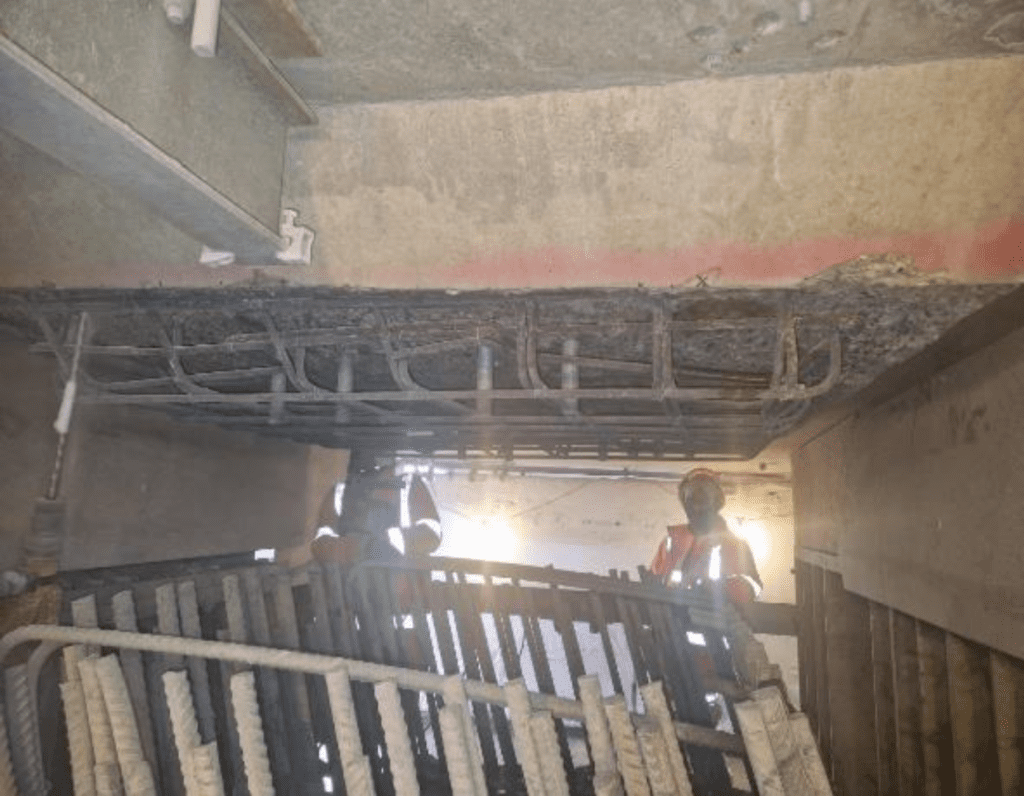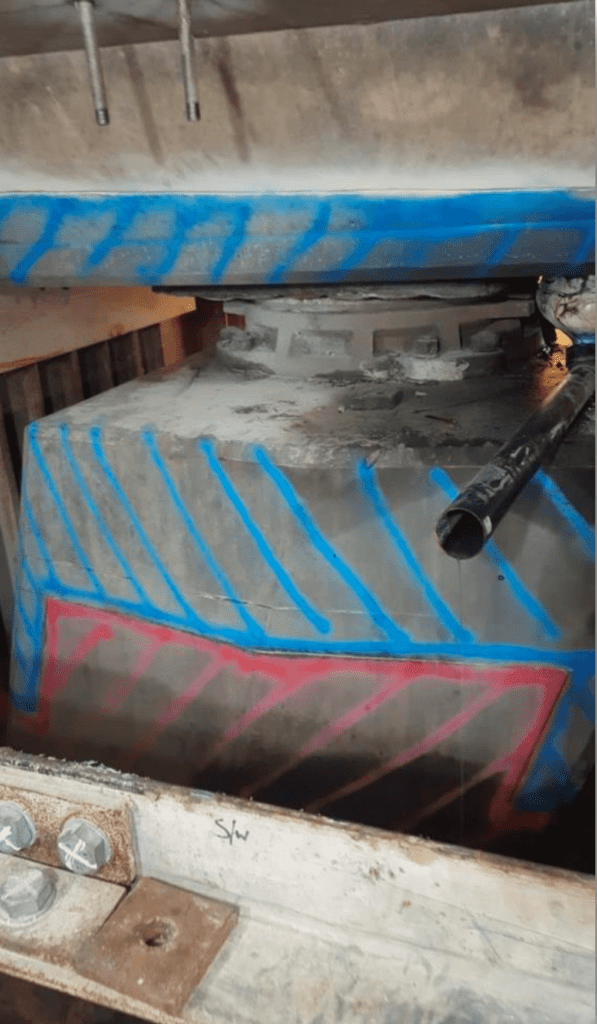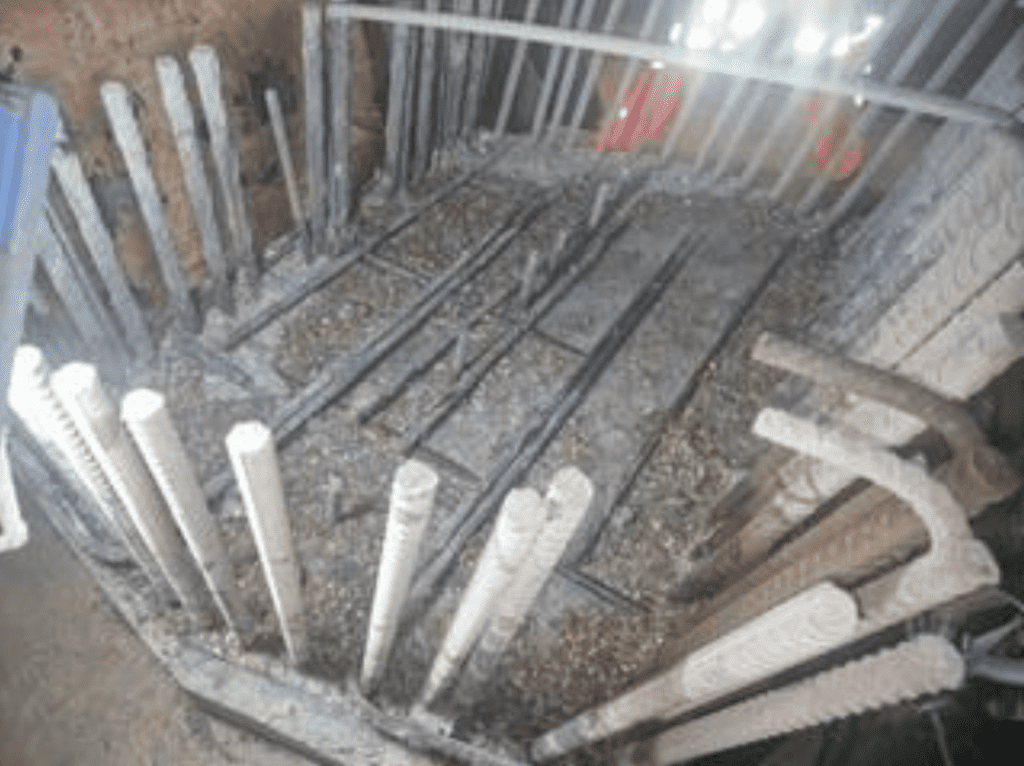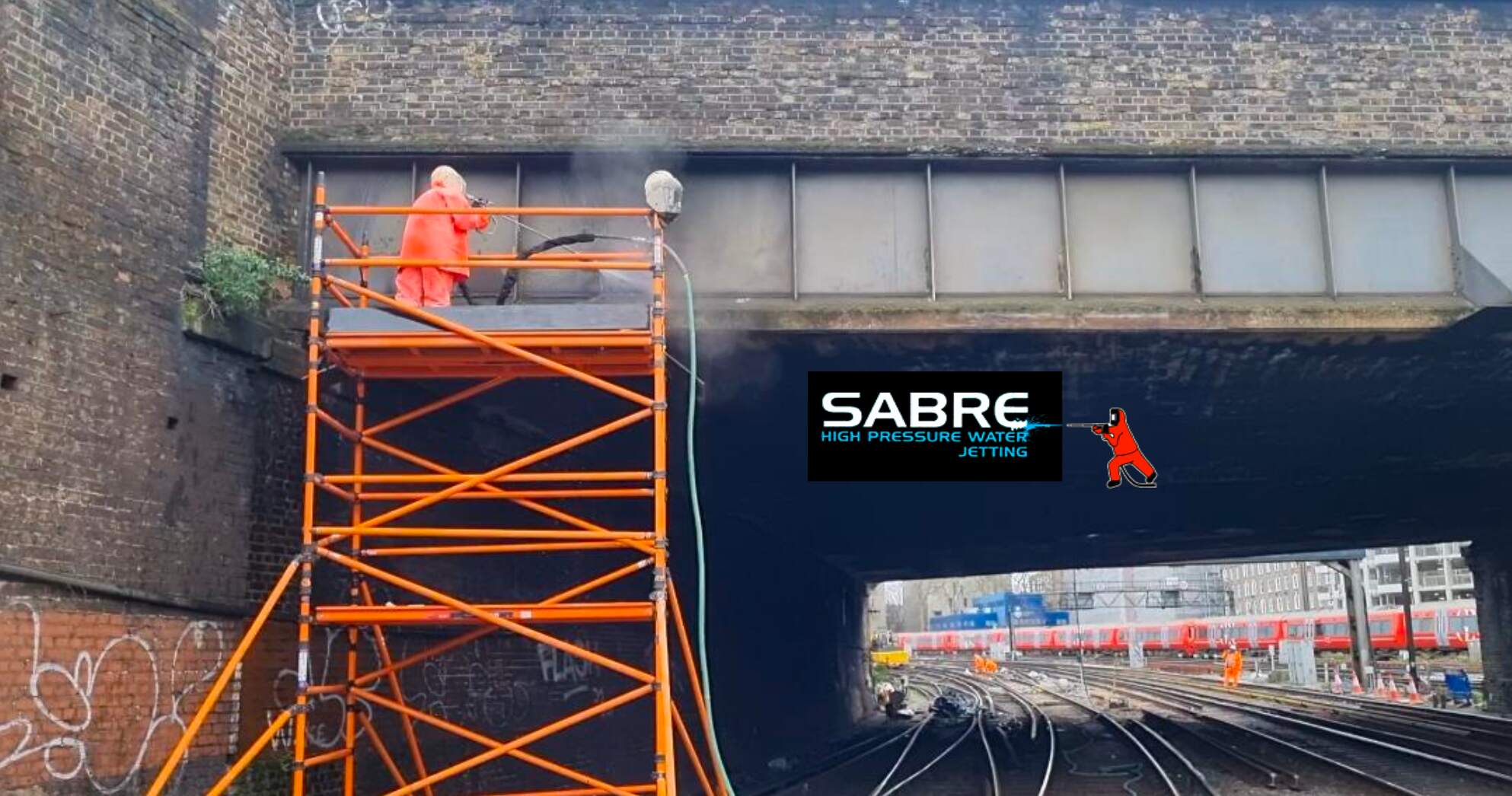PORT OF DOVER

The Port of Dover is Europe’s busiest ferry port and ramps A and B are critical to the day-to-day operations of the port for the loading and unloading of vehicular traffic from ferries arriving and departing the port. The importance of the works program being on time in this setting is crucial and we were pleased when the client got in touch requesting our assistance with the hydroblasting concrete removal services.
Requirements
The work on site included the removal and replacement of 32 bridge bearings including the stem that support the lower bearing to the upper bearing beneath the soffit of the bridge deck.
The two Sabre Jetting teams travelled to the site location the day before which consisted of 4 operatives, two tanker-based jetting units and one siltbuster hd water treatment unit ensuring the first shift went underway as smoothly as possible with little time spent transitioning from inductions, briefings to work locations.
Each tanker-based jetting unit fetched the water to the work location as a quicker method to re-routing the potable water supply from one phase of works to another which reduced the requirement for ramps, signs and routing of water supply hose for each planned phase.
The pier stems supporting the bearings to ramp A and B are at different heights, therefore each scaffold access had to be individually purpose built to ensure access to the bearings remained at a consistent height and reach for the operative to carry out the High-Pressure Hydroblasting which includes available headroom below the bridge deck and stand-off distance available between the operative and the pier stem.
The client had sent their required removal stages in advance to which were included within the operatives RAMS to which they had been briefed on prior to mobilising. This ensures the operatives fully understood the clients requirements as listed below:
Stage 1 – Hydrodemolition commenced to remove 450mm of lower stem for inspection to the condition of reinforcement by on site engineers.
Stage 2 – Decision made by engineers for an additional concrete to be removed ensuring the operatives remained 100mm away from the dowel pins to the bearing due to known asbestos within the concrete pour.
Stage 3 – Client arranged for a team to hand break and remove all asbestos (This removal process took between 2-14 days). The jetting crews remained on site and placed on standby to be ready if needed.
Stage 4 – Once all asbestos removed the jetting continued to remove all remaining concrete to free the bearing. This final Hydrodemolition stage took 1-3 days depending on the size of bearing and overall volume removed as instructed by the client.
Stage 5 – Hydrodemolition works passed off enabling the removal of the bearing, this process took up to 5 hours. The teams remained on site should they be required.
Stage 6 – Jetting continued to the soffit ‘Haunch’ to expose the soffit dowels fixing the upper bearing plate
Stage 7 – Removal of upper bearing plate by client
Bearing removal phase completed
High Pressure Water Jetting (HPWJ) has the following advantages over traditional demolition methods which include :
- Cost-effective
- Time-effective
- Precise concrete removal
- No damage to reinforcement bar
- Accurate depth control
- No microfractures to the remaining existing structure
- Leaves a high-quality scabble bonding key
- No vibration / HAV’s concerns
WORK WITH US
We are always happy to make new connections,
so if you wish to work with us or simply want more information regarding Hydro Demolition, Surface Preparation and Tank Cleaning











